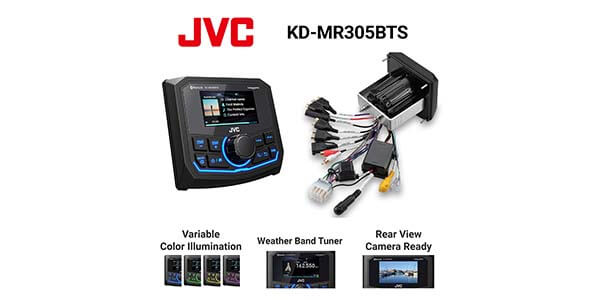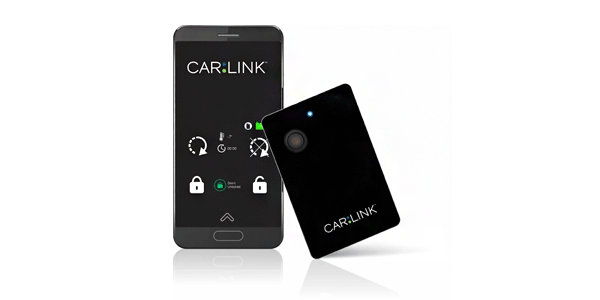JVC’s new Marine grade head unit is here! Rear-view camera capable. Check out details at CEOutlook

JVC’s new Marine grade head unit is here! Rear-view camera capable. Check out details at CEOutlook

Are you interested in car audio? Looking for part-time work? Come join our team!
Check out the careers page for more information.
Knowledge Fest 2020 is coming! We’re heading out to learn more about 12 volt systems and all things car audio, so hopefully when we return we’ll be even more efficient at giving you the mobile electronics you’re looking for.
We’ll see you Monday!

There’s a new leader in car audio amplifier sales (measured in unit sales to consumers), according to The NPD Group. Kicker took the lead in sales this year through October, edging out Alpine and JL Audio. Last year at this time, Alpine was the top brand, followed by Kicker and JL Audio.
Dual Audio also makes it into the top 5 amplifier brands this year and Pioneer remains in 5th place.
Speaker suppliers have remained almost steady with last year with Kicker and Pioneer in the lead.
See NPD’s charts below.
Top 5 Car Amplifier Brands Based On Unit Share in the U.S.
January – October
| Rank | YTD 2019 | YTD 2018 |
| 1 | Kicker | Alpine |
| 2 | JL Audio | Kicker |
| 3 | Alpine | JL Audio |
| 4 | Dual Audio | Boss |
| 5 | Pioneer | Pioneer |
Source: NPD
Top 5 Car Stereo Speaker Brands Based On Unit Share in the U.S.
January – October
| Rank | YTD 2019 | YTD 2018 |
| 1 | Kicker | Kicker |
| 2 | Pioneer | Pioneer |
| 3 | Kenwood | JL Audio |
| 4 | JL Audio | Kenwood |
| 5 | Power Acoustik | Rockford Fosgate |
Source: NPD
share on:FacebookTwitterGoogle +Linked InEmail

VOXX is adding to its Bluetooth CarLink Long Range system that allows digital remote start systems to be launched via smartphone over Bluetooth. VOXX will soon ship an alternative transmitter for the system that requires no key fob.
Instead of a key fob transmitter, the new CarLink Long Range is the size of a credit card, and roughly double the thickness, so it can be stored in a wallet or purse, and remain out of sight. As long as the driver’s phone is within Bluetooth range of the credit card-sized transmitter, or about 75 to 100 feet, the “credit card” will communicate with the car’s antenna over LoRa RF technology, giving the consumers at least a mile of range to remote start the car, without any data fees.
It also provides remote door lock/unlock.
LoRa’s long-range, low-power radio frequencies allow near instant communication, within a few hundred milliseconds, said VOXX.
The original CarLink BT Long Range was similar, but in the form of a one-button transmitter.
The new credit card sized system CCLRCC will carry a suggested retail price of $199 (versus the transmitter version at $179).
Source: CEOutlook.com
We have Voxx remote starts, call today for more information on Car-Link! Premier Car Audio Remote Starts
https://www.edmunds.com/car-technology/should-i-buy-a-cars-factory-navigation-system.html
In their infancy, navigation systems were an expensive option reserved for luxury cars. Today, navigation systems are nearly ubiquitous, even on economy cars. Furthermore, there are now lots of alternatives, ranging from portable systems to smartphones to aftermarket stereo systems with nav.
Which one should you buy? What are the advantages of each setup? Which is less expensive? Do you even need one given that your phone probably has one or more navigation applications? Here are a few things to consider so you can choose the system that’s right for you.
Pros
More features: These are geared toward techies and audiophiles who want additional
features while maintaining the sleek appearance of the factory unit.
These aftermarket navigation systems have entertainment features that
you might not find on most factory systems, such as DVD video playback,
Apple CarPlay, Android Auto and Pandora streaming.
Better screen: Compared to older vehicles with more basic stereo systems, aftermarket navigation screens are a significant improvement. Many systems will have higher-resolution screens with animated menus and flashy colors.
Customizable: An aftermarket navigation system is designed to be the centerpiece of an upgraded audio system that allows for user customization. Some models allow you to customize the menu icons, colors and backgrounds. You can also add extra equipment, such as a backup camera or Bluetooth capability, if your vehicle didn’t already have it.
Cons
Price: An aftermarket in-dash nav system can sometimes cost as much as the
factory unit. The prices start around $250 and can go over $1,000, plus
at least another $250 for the installation.
Theft prone: Thieves know how much these units cost and how easily they can be removed.
Not fully integrated: Although the system sits in the dash and is thereby more integrated than a portable unit, it will never look exactly as if it were part of the car’s original design. This may or may not be a good thing, depending on your point of view. And while you’ve gained new features, you may lose steering-wheel functions such as music volume and track controls. Some companies sell a special adapter that can restore that functionality. The part costs about $40, plus installation.
Pros
You already have one: Factory-navigation skeptics argue that smartphones are an alternative
to an expensive factory system, noting that phones already have a map
application, and that’s all you really need. Given the quality of the
maps from Apple and Google, we’re inclined to agree that they are good
enough for most people. That said, there are a few limitations to keep
in mind. More about those later.
Traffic data: In many cities, the fastest way to get from A to B isn’t necessarily the shortest path; it’s the one with the least traffic. Smartphone apps have excellent traffic data and access to Waze, the community-based traffic app. Factory nav systems may have live traffic data, but you have to pay for a subscription once the trial has ended.
Current maps and points of interest: Smartphone maps will never be out of date, and any updates are always included. The same goes for the names and addresses of any points of interest you want to visit.
Convenience: Smartphones let you input an address as you walk to the car, leverage your contacts for their addresses, have a calendar app to remind you that you need to leave at a certain time, and then route you there. All those things happen in a faster interface with typing that’s easier than the input method required by other systems.
Integrated smartphone options: Apple CarPlay and Android Auto offer the convenience of smartphone navigation with the integration and safety of a built-in system. They offer the convenience of smartphone navigation but with a larger screen display. That reduces the potential for distraction.
Cons
Distraction: Unless you have Apple CarPlay or purchase a car mount for the phone, it
will most likely sit in a cupholder. And since you’ll have to take your
eyes off the road to check the directions, this can be just as much of a
distraction as texting while driving. The mount itself can cost from
$20 for a basic unit to $100 for a do-it-all mount that will charge the
phone and boost the audio and GPS signal.
Spottier reception: Most of the native map applications rely on a cell signal for their map data. If you lose cellular coverage, you may find yourself unable to use the maps and directions. Apple and Google offer the ability to download certain maps for offline use, but it takes more preparation and hard-drive space on your phone (up to 1.7 GB on Google Maps). And without a cellular signal, you won’t have access to traffic info, alternate routes or lane guidance.
Battery drain: Running a navigation application on a smartphone can sometimes take a toll on its battery, which makes carrying a phone car charger more important. It can also be an added cost if you don’t already have a charger.
Source: Edmunds.com